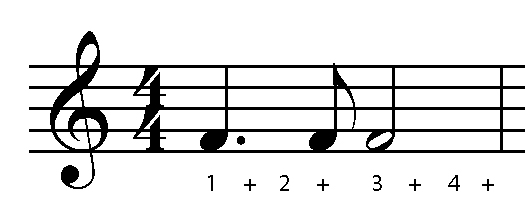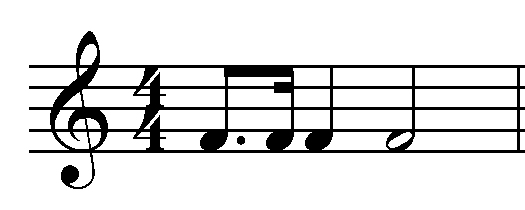duration:
- dotted quarter note followed by an eighth note (oral prompt: “tam-ti”)

- dotted eighth note and sixteenth note (oral prompt: “tim-ka”)

- rhythms, including those with eighth notes (“ti-ti”) and sixteenth notes (“tika-tika”), in various combinations (e.g., “tika-ti, ti-tika, ti-ti, ta”)
- metre (oral count, with primary emphasis on “one” and secondary emphasis on “two”: “one-and-a-two-and-a”)
pitch:
- key signatures in the music they perform (e.g., D major, G minor),




clefs used for any instruments they play
dynamics and other expressive controls:
- dynamics and articulation encountered in music listened to, sung, and played, and their signs
timbre (also known as tone colour):
- tone colour for particular purposes (e.g., use of trumpets for a fanfare, flutes for depicting birds, various instruments for creating specific moods)
texture/harmony:
- part singing (homophonic or polyphonic), chord progressions using I and V
form:
- compositions in four or more sections (e.g., AABA, ABAC [alternation between a chorus, A, and improvisations, B and C], rondo [e.g., ABACADA])